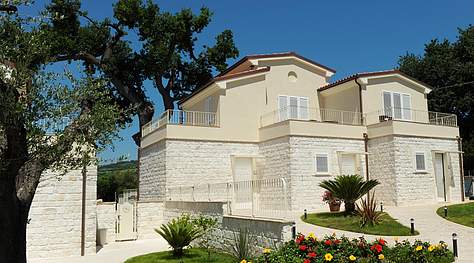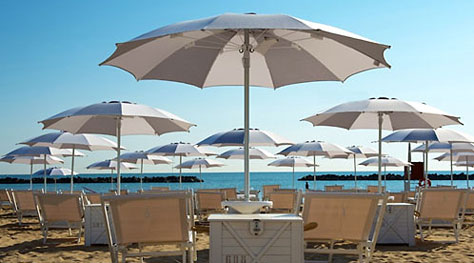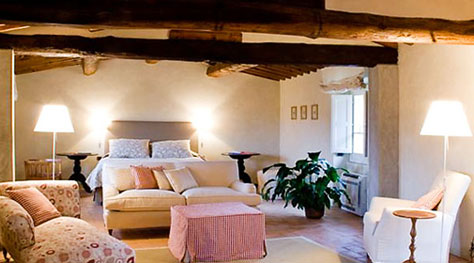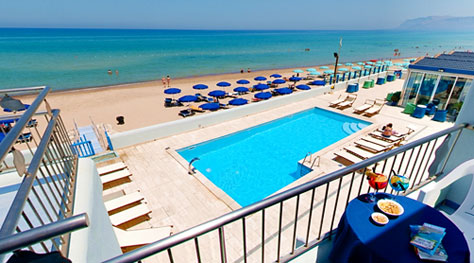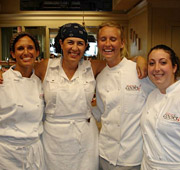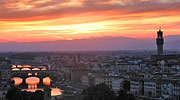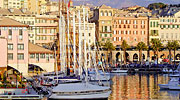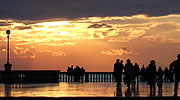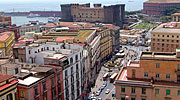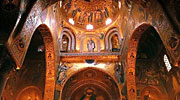Street food Italian style
Street food: a delicious way to experience the culture of a land.

From the times of ancient Rome, throughout the middle ages, and all the way up to modern times, Italy's lower classes have spent great part of their lives in the street. As a consequence, today as in the past, the street is the perfect place where to purchase a cheap, ready made meal, from one of the itinerant stall holders or small kiosks which populate the country's towns and cities.
This said, in Italy as in the rest of the world, the globalisation of eating habits, the proliferation of fast-food chains and the standardisation of products, threatens the survival of traditional street food - the food which, more than any other, is linked to the history, the culture and the ingredients of the territory where it is produced.
In recent years, so as to protect the future of Italian street food, a number of initiatives have been born. The book "Cibo di Strada" by Stanislao Porzio (Guido Tommasi publisher) reads like a gastronomic travel diary, starting from Northern Italy and passing down through Tuscany, Umbria and Marche. The continuation of Porzio's journey should be published soon, in the form of a new edition, dedicated to the rest of Italy. The cultural association Streetfood (www.streetfood.it) was created so as to promote awareness of traditional street foods, of those who produce it and those who sell it. Events dedicated to the category include the biennial International Street Food Festival, held in Cesena, and the Street Food area within Turin's Salone del Gusto, in association with Slow Food.
Tasting the street food is an essential part of experiencing the diversity of the regions of Italy. If it is in a city's streets, more than in its museums and galleries, that a visitor gets the real sense of a place, likewise, it is by consuming food purchased from a humble stall or kiosk, rather than that served in an elegant restaurant that they gain an immediate taste of the authentic flavours of a city.
A region like Liguria, for example, rich in cities and towns of immense beauty, is inextricably linked with the fragrant perfumes of its focaccia bread, sold from stalls and little bakers shops facing directly on to the streets and alleyways. Whilst in Genoa, visitors eager to taste a slice or two of the city's mouth-watering fugassa, should join the queues of locals outside the celebrated bakers shops in Via Albaro, Via Cavallotti or Via Manuzio. Liguria's Recco is famous for being the birth place of the focaccia col formaggio. Of truly ancient origin, this savoury delight is comprised of two slices of focaccia bread, made with water, extra virgin olive oil and yeast free flour, filled with a layer of soft crescenza cheese. The classic place where to savour the speciality is at Manuelina in Via Roma 276.
In La Spezia, in one of the narrow streets which characterise the city's historic center, we find the shop which Signoria Pia first opened over a century ago, in 1887, so as to sell her legendary farinata, castagnaccio and focaccia. Today, the sign "Pia La Centenaria" hangs above two points of sale (in Via Magenta 12 and Centro Kennedy 40) where, in addition to a slice of pizza and an antipasto, customers can still savour the irresistible fragrance of the traditional farinata.
Water, olive oil and chick pea flour: these are the simple ingredients of an ancient and still extremely popular recipe, sold under various names. Known as socca along the French Riviera, in Liguria it becomes Farinata, whilst in numerous parts of Tuscany it is best known as Cecina. In Livorno, this typical street food is called torta and is an integral part of the city's cinque e cinque (five and five), which takes its name from its original price: five coins worth of bread with five coins worth of chickpea torta in the middle. This speciality has become so much part and parcel with the identity of the city, that Livorno is promoting a gastronomic itinerary "Give me five&5". Bread and torta", which lists the DOC establishments equipped with wood burning oven and faithful to the traditional recipe. Amongst these we find Gagarin on Via del Cardinale 24 and Seghieri on Via Ernesto Rossi 19.
Another example of a food strongly rooted to the identity of the territory in which it is produced is the "piadina", the sole mention of which conjures up the image of Romagna (so much so that the poet Giovanni Pascoli declared it "national dish of the Romganoli"). The piadina kiosks, disseminated throughout the region of Romagna, are easily recognisable, thanks to the colorful vertical stripes and the energetic ladies cooking the piadina on boiling hot rings. These are the proud descendants of the azdore, the women who once prepared the piadina dough for almost every household in Romagna. When tasting piadina in Romagna, you'll notice the subtle differences from one town to another, the taste varying slightly according to the method of production and ingredients used. In general, the piadina produced inland is softer and thicker, whilst that made in the towns closer to the coast are thinner and crunchier. Rimini's "piada sfogliata" is best tasted in the legendary "Lella" in Via Rimembranze 74. The people of Romagna are so proud of their piadina that they have requested it be awarded PGI status and have created competitions such as Piadina d'autore, and a website (www.piadinaonline.com) dedicated to the delicacy.
Whilst the fame of the piadina has spread beyond Italian and European borders, other street foods remain strictly linked to a specific territory and can only be found in that area. These foods belong to an age-old gastronomic tradition, often far removed from modern tastes and precisely for this reason well worth trying. A fine example is Florence's lampredotto, a local institution rooted in the traditional tripe stalls, still present in the city. Lampredotto is, in fact, a type of tripe; a part of the cow's stomach slowly cooked in vegetable broth and flavoured with herbs and aromas before being served in a bread roll accompanied by a green or spicy sauce. Connoisseurs recommend asking to be given a panino bagnato, in this way the top of the bread roll will be dipped in the flavour-packed cooking juices prior to it being handed to the customer. Nencioni at the Loggia del Porcellino and La Trippaia in Via dell'Ariento are two of the most famous of Florence's "lampredottai".
At Ancona, one of the most typical foods is the city's "crocette in porchetta", small molluscs cooked in tomato sauce and flavoured with wild fennel. The speciality has all but disappeared from the streets of Ancona, bar one place: the kiosk in Corso Mazzini, near to the Tredici Cannelle.
Venice's "fritolin", fried fish served in a paper cone to be eaten in the street, is in danger of extinction. Only the Vecio Fritolin restaurant in Calle della Regina, despite its being one of the most famous and most popular in the city, has decided to remain faithful to its origins, offering clients the possibility to taste a cone-full of little fish as they wander around the streets of Venice.
Proceeding southbound, age old culinary habits and traditions are still widely respected and modern fast foods often meet a certain resistance. Such is the case of Palermo, home to foods such as the "pani ca' meusa", a bread roll of Jewish origin filled with veal spleen, panelle, made with chickpea flour and fried in boiling oil, arancini di riso rice balls and any number of other delicacies often not only sold but also cooked directly in the Sicilian capital's streets and squares. Visitors should be sure to pop in to the Focacceria San Francesco, situated opposite the basilica to which it owes its name, considered to be one of the oldest focaccia bakeries in the whole of Italy.

